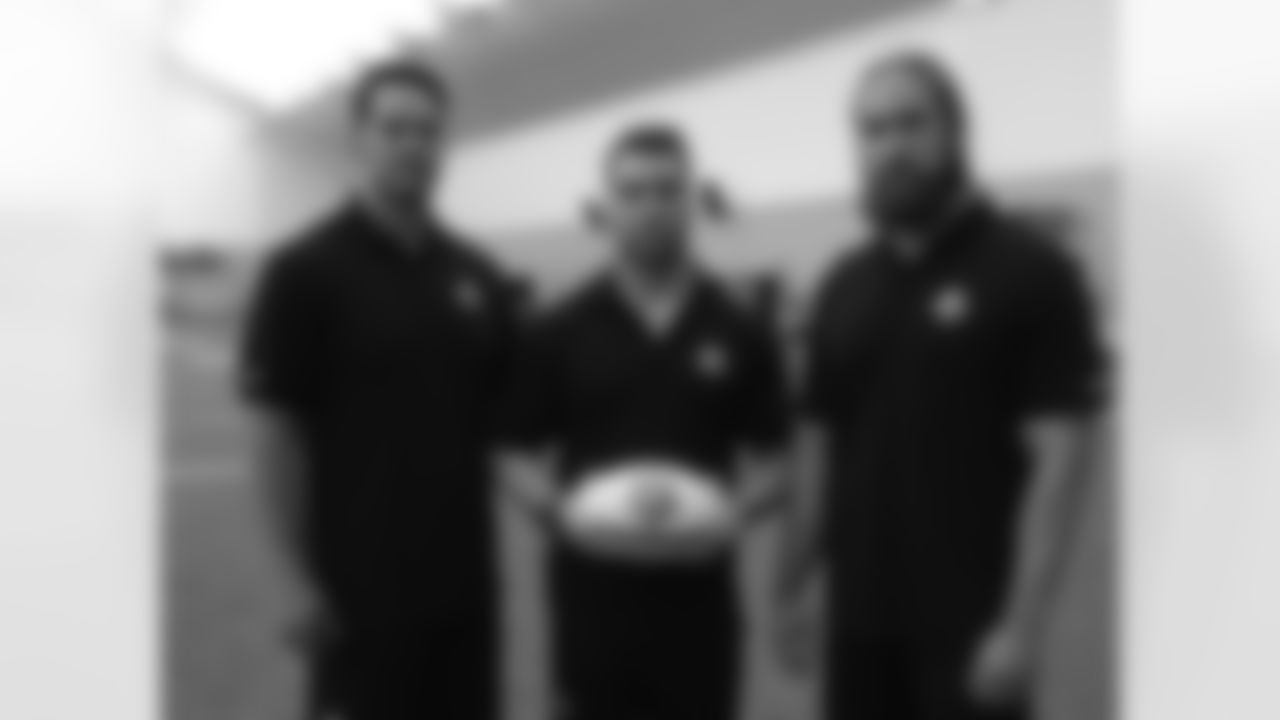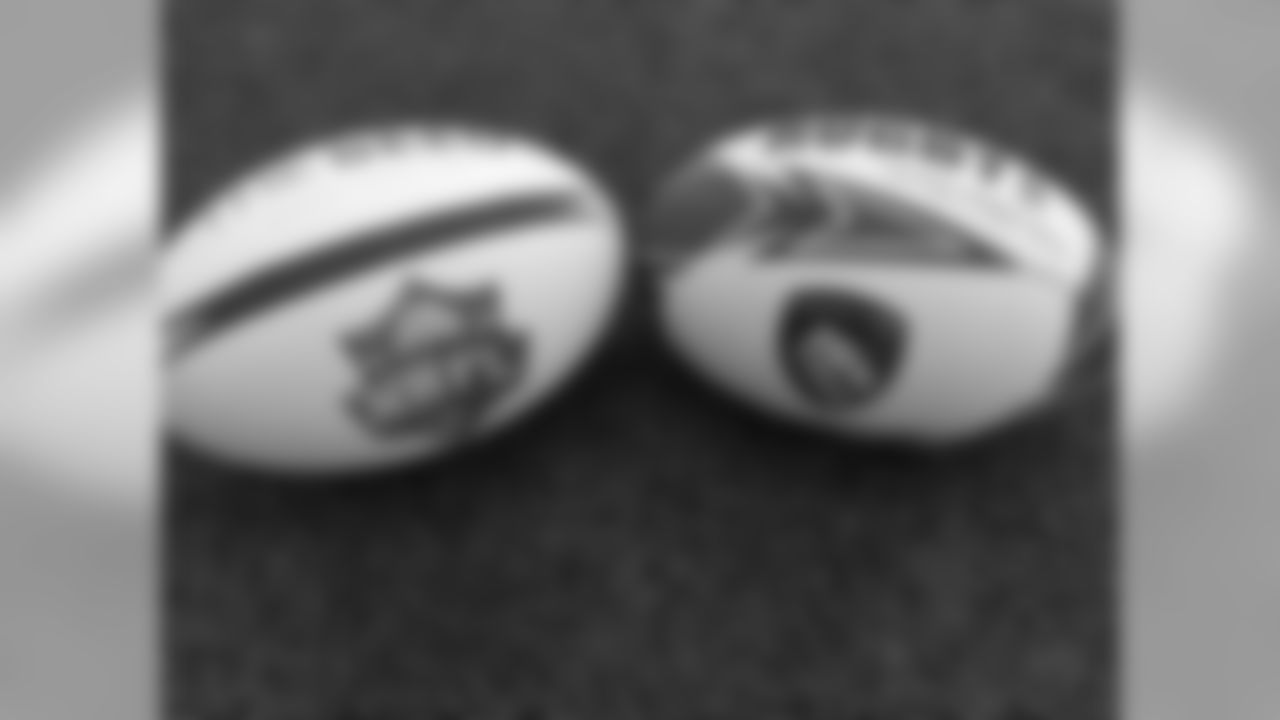Two renowned rugby clubs, the Leicester Tigers and the National Rugby Football League's (NRFL) Rough Riders, will face off at Lincoln Financial Field on Saturday, August 8, 2015, at the inaugural Independence Cup. This will be the first time ever that an elite professional rugby union match is played in the United States by a professional American team. Game time is slated for 3 PM.
Tickets are on sale now and can be purchased by either visiting www.ticketmaster.com, or by calling 1-800-745-3000.
Not quite sure what rugby is? Well, here is an easy way to break down the game. Below are the positions along with the Eagles players who would fit each role.

Props
The props are really the meat of the lineup. They must have superior upper- and lower-body strength and they still have to be mobile. To accompany the size and brute force, each player must have soft hands to catch and toss short passes to their teammates.
Eagles Players: Jason Peters and Lane Johnson
Peters is listed at 6-4, 328 pounds and Johnson at 6-6, 317 pounds, so no one is getting in their way. They have the quickness and mobility to lead the squad down the field. Soft hands are not a problem either. Johnson was both a quarterback and tight end in college before eventually being converted to an offensive lineman. Don't sleep on Peters' catching ability either. He caught 28 passes for 300 yards and four touchdowns in three seasons as a tight end at the University of Arkansas. In fact, Peters was signed by the Buffalo Bills as a rookie free agent tight end before being converted to an All-Pro offensive tackle.
Hooker
The hooker lines up between the two props on the front line. This player must be a key decision-maker while he coordinates the timing of the scrum. He is the smallest member of the front-row trio and also has to have some throwing accuracy.
Eagles Player: Jason Kelce
Starting with size, Kelce is the smallest of this trio. He is three inches shorter than Johnson and roughly 30 pounds lighter than Peters. Before the snap you constantly see Kelce pointing out the defensive scheme and potential blitzers, so he can handle the hooker's decision-making responsibilities with ease. As for throwing accuracy, Kelce already has some if you think about it. A football center needs to have accuracy when snapping the ball in shotgun formations and the Eagles are no strangers to running out of the 'gun.
Locks
The players competing as locks must be tall and should have pinpoint timing. These second-row forwards play the role as important support valves and they also must be comfortable with the ball in their hands.
Eagles Players: Fletcher Cox and Brent Celek
Pinpoint timing, eh? Lining up at defensive end, Cox has that down to a science. Cox is constantly getting into the backfield or clogging up the run at the line, and without his quick reaction off the ball this probably isn't possible. Celek is no slouch when it comes to timing either. If he doesn't fire off the ball get his block at the second-level, some of those long runs would never happen. Both of these players are good with the ball in their hands, too. Celek is obviously a tight end and has been known for some big catches, but Cox looked like a running back when he scooped up the fumble vs. Jacksonville in Week 1 last season and scampered into the end zone for the score.
Flanker
Flankers are great all-around players with tons of energy. They have multiple skills and excel in everything from tackling to speed and more. One of the flankers is also the player who is known as the jumper during the scrum.
Eagles Players: Connor Barwin and Brandon Graham
The spark plugs of the forward group, the flankers can change a game with their plays, just like how Barwin and Graham alter an offensive game plan by bringing mass amounts of pressure. These linebackers bring their tackling (126 combined in 2014) to the rugby pitch and also the energy that team feeds off of, just like their sack celebrations. Barwin is also known by using his long, 6-4 frame to break up passes from opposing quarterbacks, so there's no reason why #Barwinning can't be the team's jumper during scrums, too.
Number Eight
Yes, the position is simply called number eight. This player centers the third-row of the forward set and needs to be explosive and dynamic. The number eight is known for excellent support play to accompany the tackling and ball carrying.
Eagles Player: LB Mychal Kendricks
Kendricks is already comfortable playing in the middle of the field as an inside linebacker. He is also familiar to playing with Barwin and Graham. His tackling ability is excellent (108 tackles in 2014), even while missing four games, and he has a good set of hands (three career interceptions). Let's not forget that it's not going to be easy to bring him down when he has the ball, too.
Scrum-Half
The scrum-half is the quarterback when it comes to building any sort of attack. This position can be found behind the forwards and is a member of the backs. A good player of this position will control the offensive rush. With that being said, good vision and awareness is extremely important in this position. Without good protection from the forwards, the scrum-half will struggle.
Eagles Player: Sam Bradford
The quarterback of the Eagles would quarterback this rugby team as the Scrum-Half. Bradford demonstrates the quick decision-making ability needed in the Eagles' offense and quickly runs through his progressions which would make him a dynamic scrum-half. In football, Bradford cannot work if he does not have protection and this is the same in rugby.
Fly-Half
The fly-half needs to be a jack of all trades. This player must be able to do it at all on the pitch with speed, tackling ability and even kicking.
Eagles Player: Donnie Jones
Now, before you say it, Jones may not be the best tackler in an Eagles uniform, and he may not have the most speed, but he will lock down the kicking responsibilities. Jones already uses a rugby-style punt and this will create a smooth transition from the gridiron to the pitch. Keep in mind that punters sometimes have to make the tackle, too. Jones has made 13 of them in his career.
**
On Wednesday, players from the NRFL's Rough Riders were in Philadelphia prepping for August's NRFL Independence Cup. Tickets go on sale Friday ...

Rough Riders players Taylor Gentry, Isaac Remington, and Nic Purcell

The players meeting up with LS Jon Dorenbos outside of the NovaCare Complex

The players posing in the bubble at the NovaCare Complex

Scott Clarke, Head of Community for the Leicester Tigers further explaining the game of rugby

These two teams will face of at Lincoln Financial Field later this summer for the NRFL Independence Cup

The players putting on a demonstration inside the bubble

Nic Purcell with Eagles Insider Dave Spadaro inside the studio

Isaac Remington and Nic Purcell were in training camp with the Eagles in 2013

The players and representatives inside the Eagles locker room at the stadium

The players inside the Eagles locker room

Remington, Gentry, and Purcell entering the locker room

Taking in the sights of the media room

Scott Clarke checking out Temple's locker room over at the Linc

Isaac Remington checking out the Eagles nest

The NRFL crew getting started on their tour

Michael Clements and George Robertson of the NRFL checking out their venue for the NRFL Independence Cup

Admiring the historical images scattered around the stadium

Mr. Clarke taking a picture in the Linc

The NRFL group heading through the tunnel and to the field

A special thanks to Dontee for the great tour
Wing**
The wings need to know how to finish the team's attack, but they're also on the last line of the team's defense. One important aspect of being an effective wing in rugby is that their pace needs to stay consistent as they are constantly running up and down the field.
Eagles Players: Byron Maxwell and Jordan Matthews
Well, since this position requires offense and defense, why not put a player from each side of the ball in the lineup? Matthews can finish the drive and Maxwell can be the lockdown back that prevents the opposing score. What they both have in common is their pace. Matthews expects to see an expanded role with the Eagles' offense this season and Maxwell is expected to lock down the opponent's top receivers. Both players will constantly be on the field and Chip Kelly's training methods will provide the conditioning to thrive at the wing positions.
Centre
The two centre positions are strong and dynamic runners with a good eye for exposing gaps in the opposing defense. They should run in direct lines and try to either A: create space for themselves or B: draw a crowd of attention from the defenders.
Eagles Players: DeMarco Murray and Darren Sproles
There may not be two other players who fit these positions better than Murray and Sproles. Murray is the definition of a one-cut back and Sproles takes "dynamic" to a whole new level when he has the ball. These two players combined for over 2,000 yards on the ground last season and definitely will draw the attention of the opposing team on the field. Being in a new three-back system also shows that they do not have a problem with sharing the ball with their teammates, which is a valuable characteristic in rugby.
Full-Back
The full-back is the last player back for the team and needs to have a tactical awareness of what the offensive team is doing. This person is the safety valve, but also must stay composed and stay in position. Finally, the full-back must have good hands and be good at catching high punts.
Eagles Player: Malcolm Jenkins
Jenkins is essentially the full-back for the Eagles' defense. He is an NFL veteran who has the trust of his teammates, a perfect player to be the last man back on the pitch, plus he is used to being back there playing safety. As for having good hands, Jenkins set a career-high with three interceptions last season and in college Jenkins occasionally was a returner for Ohio State.





















